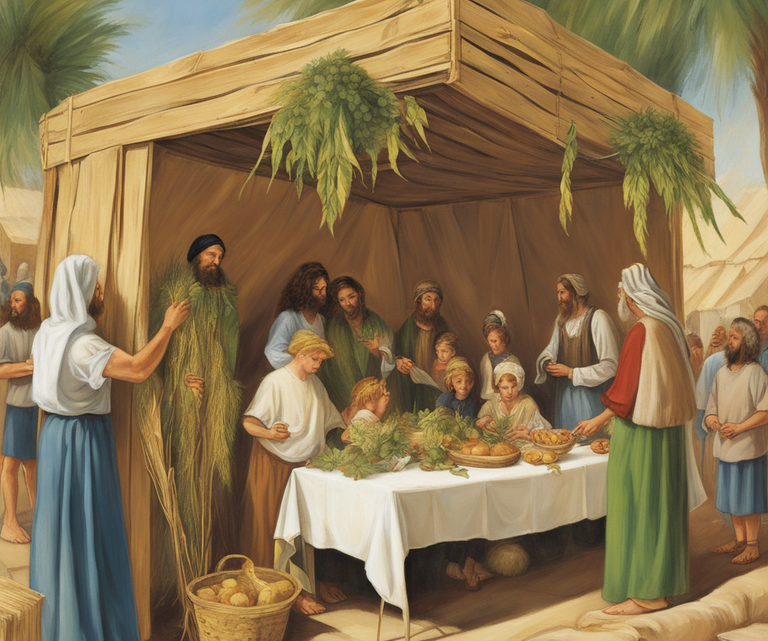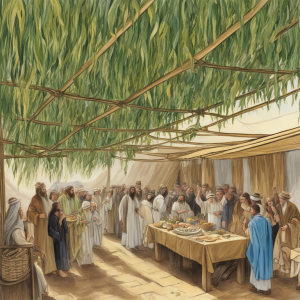Celebrating Sukkot: Unveiling Layers of Meaning in the Feast of Tabernacles for Believers in Yeshua


Sukkot, also known as the Feast of Tabernacles, is a vibrant and multi-layered festival that engages the Jewish community every year. As outlined in Leviticus 23:33-43, it is a feast of seven days, meant to commemorate the Israelites’ 40 years of wandering in the wilderness. For those who follow Yeshua, the festival takes on additional layers of significance, enhancing the richness of the traditional celebrations. This comprehensive guide aims to shed light on the do’s and don’ts of Sukkot from both traditional Hebraic and Messianic viewpoints.
Traditional Do’s and Don’ts
Do’s
- Build a Sukkah: The core commandment of Sukkot is the construction of a sukkah, a temporary dwelling that serves as a physical reminder of the Israelites’ time in the wilderness. The structure should be frail, with a roof made of organic material like palm fronds (Leviticus 23:42).
- Invite Ushpizin: Derived from the Aramaic word for ‘guests,’ Ushpizin are the spiritual guests invited into the sukkah each night. Traditional figures include Abraham, Isaac, Jacob, Moses, Aaron, Joseph, and David. Their presence is symbolic and serves to teach lessons of faith and hospitality.
- Wave the Four Species: The waving of the lulav (palm branch), etrog (citron), hadas (myrtle), and aravah (willow) is a ritual act that involves shaking them in six directions—north, south, east, west, up, and down—to acknowledge Yehovah’s omnipresence (Leviticus 23:40).
- Feast and Rejoice: Known as “Zman Simchateinu” or “the Season of Our Joy,” Sukkot is a time to engage in festivities. Special meals, prayers, and songs are common during the week (Deuteronomy 16:13-15).
- Say Blessings: Scripted prayers for dwelling in the sukkah and for waving the Four Species are traditionally recited (Talmud, Sukkah 46a).
- Attend Synagogue: Sukkot has unique prayers and Torah readings (Numbers 29:12-16). Synagogue attendance is encouraged to fulfill these communal obligations.
- Observe Hoshana Rabbah: The seventh day is marked by seven circuits around the synagogue with the Four Species, symbolizing divine protection (Psalm 118:25).
Don’ts
- Avoid Work on Yom Tov: Just like the Sabbath, the first and last days of Sukkot are observed as Yom Tov, where work is restricted (Leviticus 23:35-36).
- Eat Outside the Sukkah: It is traditional to consume bread-based or grain-based meals inside the sukkah (Talmud, Sukkah 26a).
- Neglect the Four Species: Each species is indispensable for the mitzvah and should be free of blemishes (Mishnah, Sukkah 3:1).
- Disrespect the Sukkah: The sukkah is not merely a hut but a sacred dwelling, deserving respect and care (Shulchan Aruch, Orach Chayim 639:1).
For Believers in Yeshua
Do’s
- Reflect on Yeshua’s Presence: According to the Gospel of John, Yeshua celebrated Sukkot and even taught in the Temple during this time (John 7:2-14). The festival provides a backdrop to ponder His divine incarnation and mission.
- Rejoice in Salvation: Yeshua, whose name means “Salvation,” serves as the cornerstone of Messianic faith. Sukkot becomes a time to rejoice in the salvation offered through His sacrifice (Matthew 1:21).
- Foster Unity: Yeshua’s high priestly prayer in John 17 emphasized the unity of believers. Sukkot, being a community-centered festival, offers an excellent opportunity to pray and work for unity within the Body of Messiah.
- Share the Message: Given the festival’s prophetic undertones about God dwelling with humanity, Sukkot offers an opportune moment to share the Good News (Revelation 21:3).
Don’ts
- Forget the Original Context: While understanding Sukkot through the lens of Yeshua enriches the experience, the Hebraic roots and historical significance should not be overlooked (1 Corinthians 15:3-4).
- Ignore the Prophetic: Sukkot also foreshadows the messianic age when Yehovah will dwell with His people (Zechariah 14:16-19). Believers should hold fast to this future hope.
- Isolate Yourselves: Yeshua called His followers the “light of the world” (Matthew 5:14). Sukkot is a communal festival, and there’s value in participating with the broader Jewish community when possible, to be a light and witness.
Conclusion
Sukkot, the Feast of Tabernacles, is a jubilant celebration with rich traditions and profound spiritual implications. By balancing both its Hebraic roots and the additional meanings brought by belief in Yeshua, one can experience a multidimensional celebration that deepens faith and enhances community. Whether it’s constructing a sukkah, inviting Ushpizin, or waving the Four Species, each act performed is not merely ritualistic but deeply symbolic, connecting us to our past, enriching our present, and pointing us toward a glorious future.
References:
- The Torah: Leviticus 23:33-43, Numbers 29:12-16, Deuteronomy 16:13-15
- The Talmud: Tractate Sukkah
- The New Testament: Matthew 1:21, John 7:2-14, 17; Revelation 21:3
- Mishnah: Sukkah 3:1
- Shulchan Aruch: Orach Chayim 639:1
- Zechariah 14:16-19
By acknowledging the diverse layers of significance, from the historical to the prophetic and the Messianic, Sukkot becomes a truly enriching spiritual journey, resonating with believers in every walk of life.

